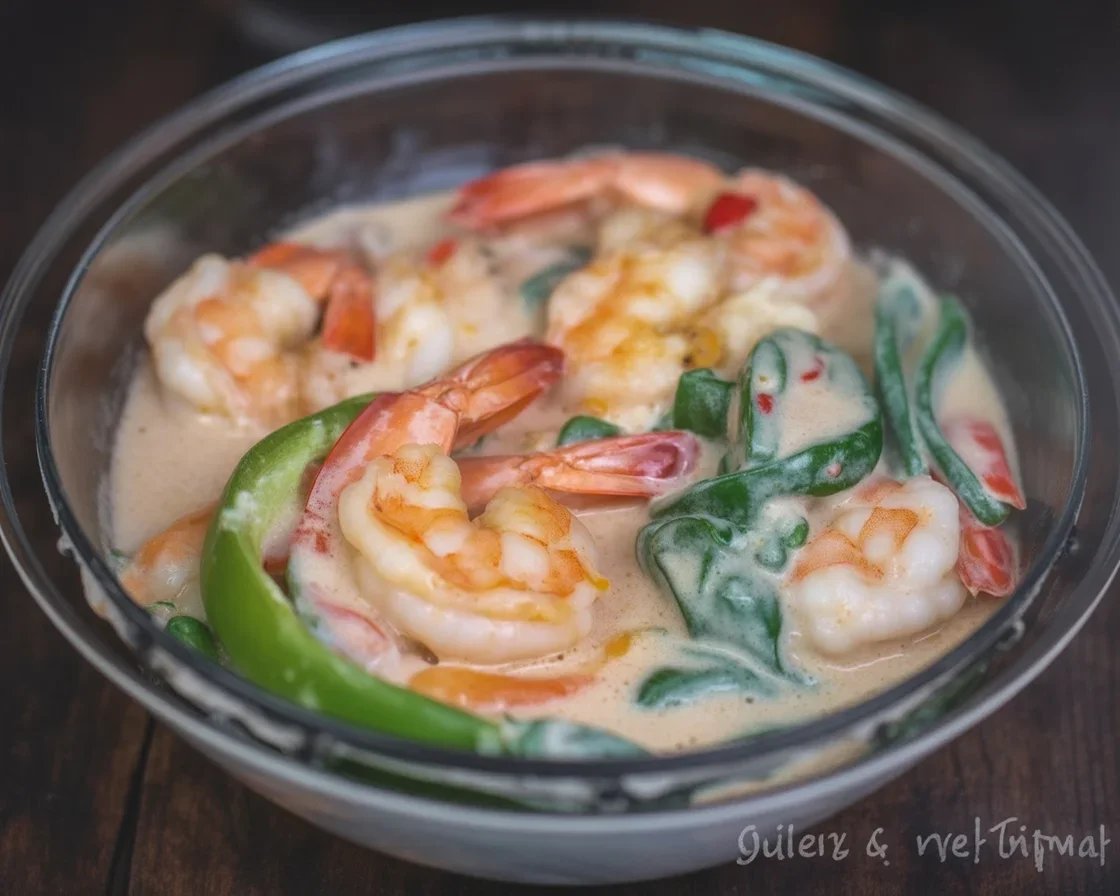Filipino ginataang hipon is always my back-pocket fix for when I feel like eating something fancy… but I do not have the time (or, let us be honest, the patience) for a ton of prep. Too many times, I have stood in the kitchen staring at shrimp, wondering what magic I could make, and ginataang hipon just wins. Creamy meets seafood. Plus, no complicated step. If you have ever been stuck thinking, “What on earth do I do with this bag of shrimp?” or, “How do folks make those coconut-y Filipino dishes taste so tasty?” — well, you are in the right place. For an even deeper dive, check out creamy ginataang hipon shrimp in coconut milk and this real-deal version of ginataang hipon shrimp in coconut milk for more inspo. 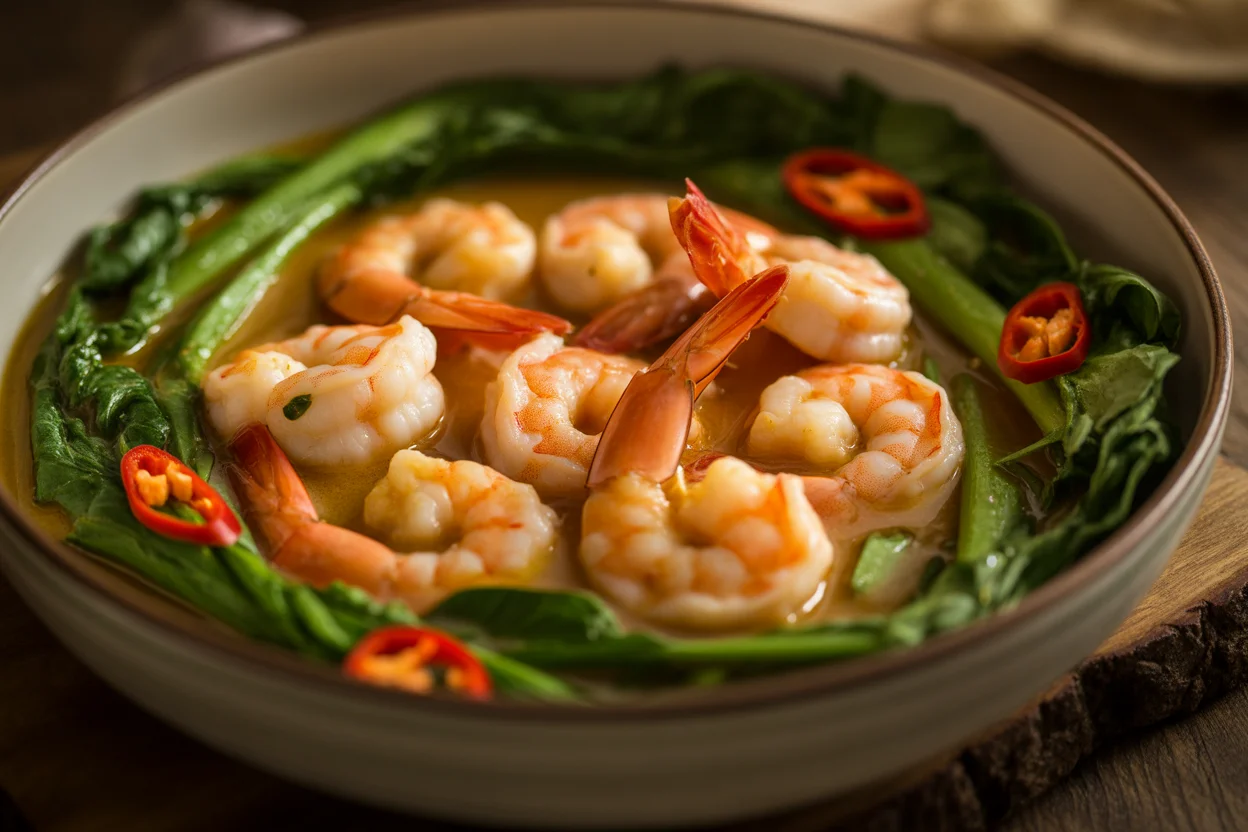
Introduction to ginataang hipon
So, here’s the lowdown. Ginataang hipon literally means “shrimp cooked in coconut milk” in Filipino. Simple, right? It is one of those dishes every Filipino seems to crave after long days, rainy nights, or holiday gatherings that run too late. Why? Because that sauce just hugs the shrimp with deep coconut flavor and legit comfort. My grandma would whip up a big pot when family visited, and it was always first to disappear. Real talk: it kind of tastes like a five-star restaurant dish, only you made it in your own kitchen. The way the coconut blends with the slightly sweet, briny shrimp? It is basically the taste of home for a ton of Filipinos.
It is a super flexible recipe, too. Once you try this version, maybe you want to sample something zingier like kinilaw na hipon shrimp ceviche Filipino style another time. But for now, let us focus on this rich, coconutty dish that feels like a warm blanket in a bowl.
“This recipe is honestly so easy, but the flavor is wild. It tastes like the beach and a good home-cooked meal rolled together. Never thought shrimp and coconut could make something so good, but here we are.” — Jess T., reader from Quezon City
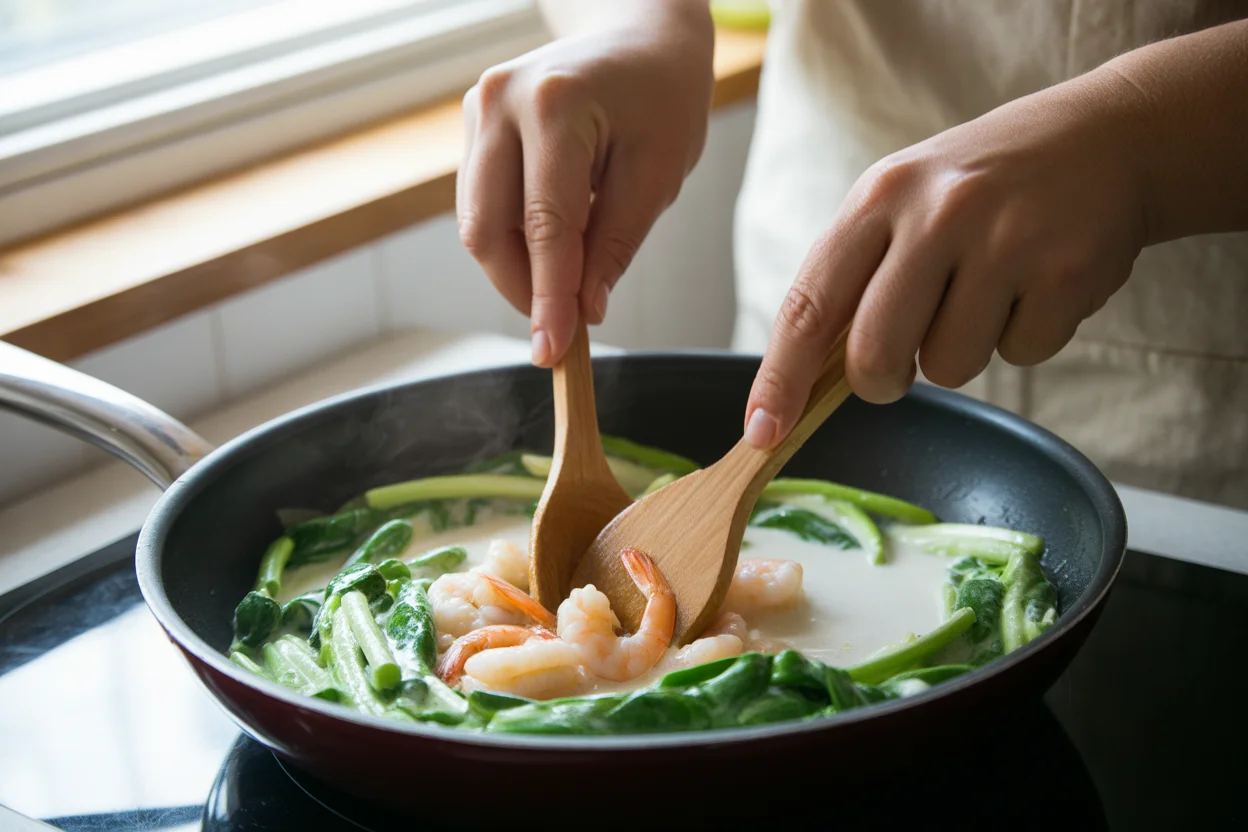
Cleaning shrimp
Okay, let’s talk shrimp. Cleaning them sounds boring, but you do not want that gritty sand or weird black stuff ruining your meal. Sometimes I keep the shells on for flavor (and because I’m lazy), but deveining makes everything less funky. Honestly, you can buy shrimp already shelled and deveined to make your life easier.
I rinse in cold water, snap off the heads and shells (unless I’m feeling “rustic,” as my mom says), and use a paring knife to remove that dark line on the back. You can leave the tails if you like to eat with your hands — totally up to you. Oh, and if you see any smell that hits your nose in a weird way? Toss those out. Freshness is key, and, trust me, old shrimp will mess up the ginataang hipon.
You might get a little messy, but that’s part of the fun. Shrimp are slippery, so grip tight, or you’ll risk one jumping off the counter. Last tip: pat them dry before they hit the coconut, so you get the best flavors. 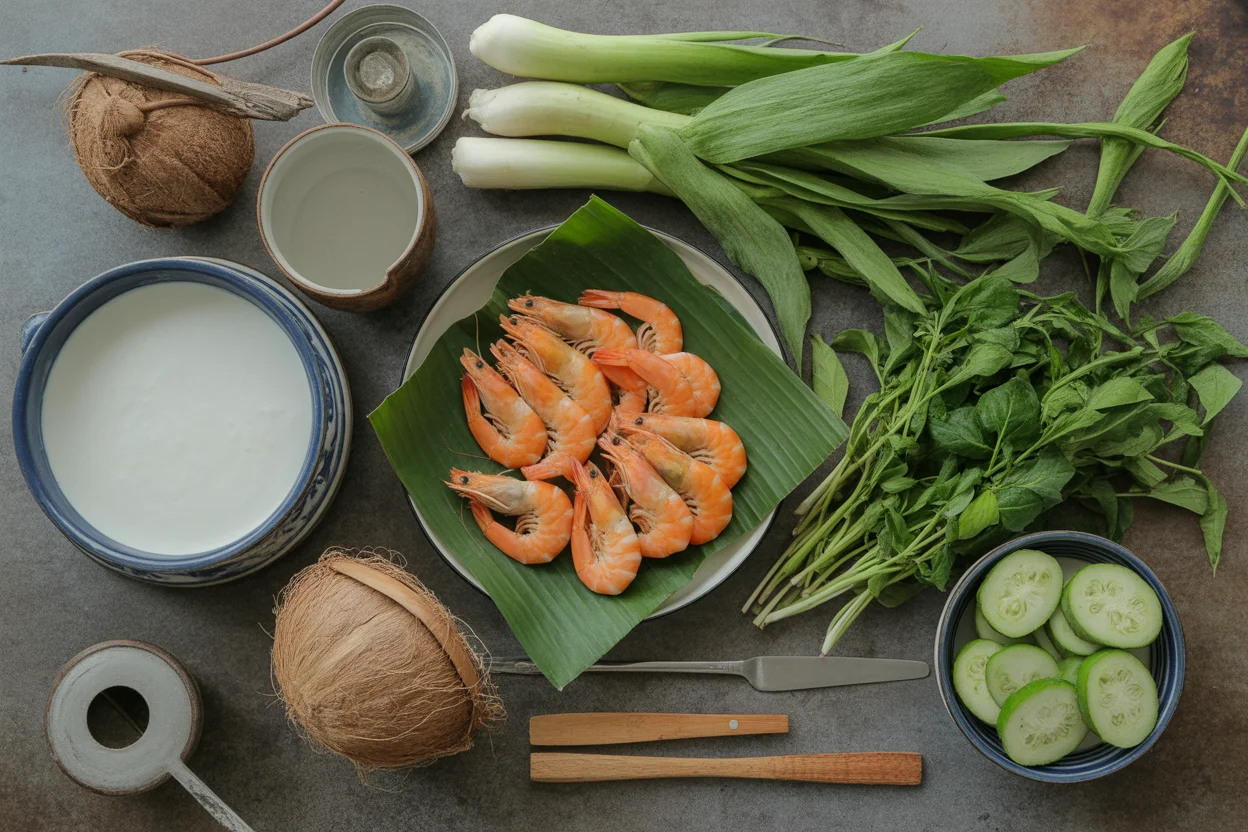
Cooking coconut milk
Don’t let coconut milk scare you off. You don’t need to be a kitchen wizard to make this part work. Start with canned coconut milk — the thick, creamy stuff. Not coconut water! Dump it into your pan, then let it simmer gently. Stir it a few times so it doesn’t stick at the bottom. Once it starts bubbling and you see the oil separate, that’s actually a good sign. Means your coconut milk is getting thick, and that is where all the flavor hides.
Fresh coconut milk? If you can get it, it’s wild. But most days, I’m just tossing a can in, because convenience always wins after work. Some folks say to cook it longer until it “cracks,” but I find about 10-15 minutes does the trick for this dish. Just don’t crank the heat, or you’ll end up with a curdled mess, which — yikes — doesn’t look great on the plate. This part smells fantastic, by the way, which is just a bonus.
Adding spices
This is where you put your stamp on ginataang hipon. Maybe you like it spicy, or want to keep it family-friendly. I toss in garlic and onion first right in the coconut, let them soften, and then add bell peppers or long green chili if I have ’em. Sometimes, when my Dad’s around, he’ll sneak in more chili for heat. Fish sauce is your friend here—sounds funky, tastes magical.
Turmeric? Sure. Paprika? Why not. You can freestyle, but I recommend sticking to ginger, black pepper, and a tiny bit of sugar to round it all out. Don’t forget the shrimp go in last so they stay super tender. Stir gently! This dish is all about layering flavor but not overcomplicating the process. Trust your nose—if it smells nourishing, you’re on the right track.
Serving
Serving ginataang hipon is fun (and can be a little messy if everyone’s going shell-on style). Here’s what I like to do:
- Ladle ginataang hipon over heaps of steamed rice (jasmine works best for soaking up all that goodness).
- Serve with a side of fresh veggies or even try a simple bulanglang Filipino vegetable soup with guava if you want to keep it healthy.
- If you’re having people over, put out some extra spoons and napkins — coconut sauce tends to get everywhere, and that’s part of the fun!
It’s comfort food at its finest, and hands get involved quick!
Flavor tips
Here’s the honest truth: ginataang hipon can be as mild or as bold as you want. Want it richer? Use more coconut cream (the ultra-thick stuff on top of the can). Liven it up with a squeeze of calamansi or lime at the very end. Got leftovers? Lucky you. The flavors get even better after a night in the fridge — and you can reheat it gently for tomorrow’s lunch.
Not all coconut milks are created equal. If you open a can and it smells a little weird or watery, chuck it out and pick up a decent brand next time. Oh — and don’t skip the fish sauce. Trust me. It makes a difference between “pretty good” and “wow, seriously restaurant-level.”
You can even pair ginataang hipon with 10 adobo variations Filipino adobo variations for a total comfort food lineup. The balance of flavors will knock your socks off.
Regional versions
Here’s where things get fun — every Filipino region seems to have their own twist. Down south, folks love adding squash (“kalabasa”) and green beans (“sitaw”). Some places, like Bicol, turn up the heat and go wild with chilis. In Luzon, it’s all about simplicity: just shrimp, coconut, plus some leafy greens if you’re lucky.
My ate in Mindanao throws in mung bean sprouts for extra crunch (not traditional, but oh-so-good). The point is, don’t get stuck thinking there’s only one way to make ginataang hipon. Experiment! Try swapping shrimp for crab, or, if you’re feeling vegetarian, toss the shrimp and stick with coconut milk and veggies for a meatless treat.
I find the dish really shines when everyone throws in goodies they love. Makes eating together even better.
Common Questions
Q: Can I use frozen shrimp for ginataang hipon?
A: Absolutely! Thaw them well and pat dry before cooking. Makes the dish less watery.
Q: Is coconut cream better than coconut milk?
A: Cream is richer and will make the sauce silkier, but milk works great. I sometimes mix both if I want extra thick sauce.
Q: How long does ginataang hipon keep in the fridge?
A: About two days for me, but make sure it is stored in a tightly closed container.
Q: Can I make this without shrimp?
A: Sure thing. Sub it with crab, mussels, or even tofu for a budget version.
Q: What if my coconut milk curdles?
A: Keep your heat lower next time. But if it happens, it’s still tasty. It just looks a bit funny.
Why You’ll Come Back to Ginataang Hipon Again and Again
So, what do we have here? We’ve got a dish full of creamy coconut milk, sizzling fresh shrimp, and flavors that, honestly, get better with every spoonful. Ginataang hipon isn’t complicated, but it’s comfort food on a whole different level. Don’t be afraid to play with what you’ve got in the fridge, make it your own, and just dive in. I promise, not only will you impress yourself, but maybe soon you’ll be wanting to check out tasty dishes like Ginataang Hipon na may Sitaw at Kalabasa or Ginataang Hipon & Kalabasa the next time you’re feeling adventurous. Give this recipe a spin — and trust me, you’ll see why so many folks say it tastes just like home. 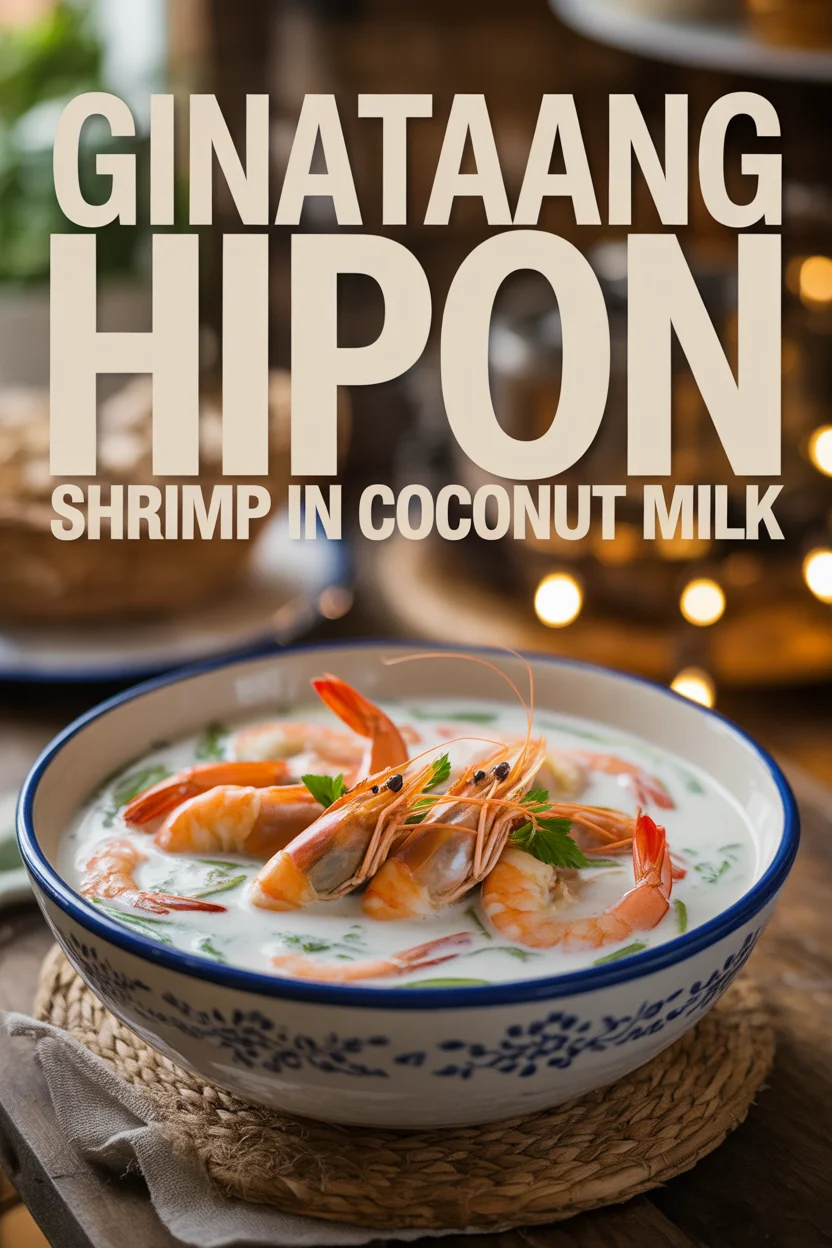
Ginataang Hipon
Ingredients
For the ginataang hipon
- 1 pound shrimp, cleaned and deveined Can use frozen shrimp, thaw them well before cooking.
- 1 can coconut milk Use the thick, creamy type, not coconut water.
- 2 tablespoons fish sauce Essential for flavor.
- 1 medium onion, chopped For base flavor.
- 3 cloves garlic, minced For base flavor.
- 1 medium bell pepper, sliced Can substitute with long green chili.
- 1 teaspoon ginger, minced Adds warmth.
- 1 teaspoon black pepper To taste.
- 1 teaspoon turmeric Optional for color and flavor.
- 1 teaspoon sugar To balance flavors.
For serving
- 4 cups steamed jasmine rice Best for soaking up the sauce.
- optional fresh veggies For a healthy side.
Instructions
Preparation
- Clean the shrimp by rinsing in cold water, removing heads and shells, and deveining.
- Pat shrimp dry before cooking.
Cooking
- In a pan, heat the coconut milk over medium heat until it simmers.
- Add onion and garlic, let them soften for a few minutes.
- Stir in bell pepper, ginger, and fish sauce.
- Season with black pepper, turmeric, and sugar.
- Finally, add the shrimp and cook gently until they are just cooked through.
Serving
- Ladle ginataang hipon over heaps of steamed jasmine rice.
- Serve with fresh veggies on the side.
